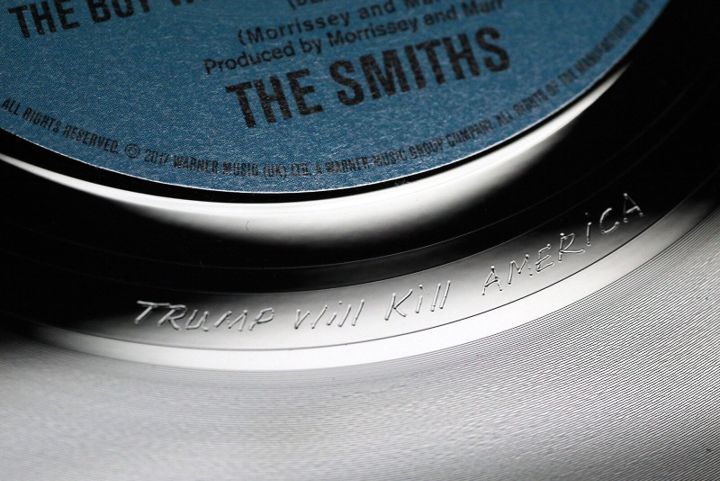
How to Grade Vinyl Records?
Absolute Records is Singapore’s largest online vinyl record catalogue. After cataloguing about 2000+ records, trust me, we know the pain of grading. Grading is a system used by collectors and sellers to determine the condition and quality of a vinyl record. To ensure customer satisfaction, Absolute Records understands that grading must be communicated clearly and accurately. Now, How to grade?
One of the most widely used grading systems is the Goldmine Standard. Developed by Tim Neely and published in the Goldmine Price Guide to Collectible Record Albums, the Goldmine Standard is used by collectors and dealers worldwide.
Absolute Records uses Goldmine Standard for vinyl record grading. Here are the grades:
Mint (M): A record that is considered "Mint" is in perfect condition, with no visible flaws. The record should have no scratches, scuffs, or other physical damage, and the label should be clean and unmarked. The record should also play without background noise, skips, or jumps. Records that are graded "Mint" are in near-perfect condition and are highly sought after by collectors. Absolute Records hold a handful of such rare collectibles, some are even sealed, brand new.
Near Mint (NM): A record that is considered "Near Mint" may have a few very minor flaws, but is still in excellent condition. These minor flaws might include light surface scuffs or hairline scratches that do not affect play. The label should also be clean and unmarked. Records that are graded "Near Mint" are still in excellent condition and play well but are not as valuable as records that are graded "Mint". Most of Absolute Records vinyl are near mint condition.
Very Good Plus (VG+): A record that is considered "Very Good Plus" may have some noticeable flaws, such as light surface scuffs, light background noise, or occasional crackling during play. The label may also have some minor wear, such as writing or small tear. Records that are graded "Very Good Plus" are still playable and collectable. Absolute Records do have a handful in this grade.
Very Good (VG): A record that is considered "Very Good" may have noticeable surface scratches and scuffs, as well as some background noise or crackling during play. The label may also have moderate wear, such as writing, small tears, or discoloration. Records that are graded "Very Good" are still playable. Absolute Records has very few in this grade.
Good (G): A record that is considered "Good" may have significant surface scratches and scuffs, as well as heavy background noise or crackling during play. The label may also have significant wear, such as writing, tears, or discoloration. Records that are graded "Good" are still playable. Offerings by Absolute Records rarely belong to this grade.
Poor (P): A record that is considered "Poor" is in poor condition, with heavy scratches, scuffs, and physical damage that affects play. The label may also be damaged or missing. Records that are graded "Poor" are considered to be in very poor condition and are not collectable. To uphold customer satisfaction, Absolute Records do not sell records in this grade.
In conclusion, understanding the Goldmine Standard for vinyl record grading is important for buyers and sellers. Whether you are a collector or a helpful dealer like Absolute Records, knowing the condition and quality of the records you are buying or selling is essential. By following the Goldmine Standard, Absolute Records strives to ensure that your vinyl record collection is of the highest quality and that you are getting the best value for your money.
Dead wax.
Enjoy Analogue!
What is Dead Wax?
Dead wax is to the area on a vinyl record that is located between the end of the final music track and the label in the center of the record. This area is usually blank and is commonly used by record companies to include information about the vinyl record, such as the record label, the catalog number, and other production details.
Some vinyl record collectors and audiophiles have become interested in the dead wax area because it can contain etchings or inscriptions that provide additional information about the record. For example, some vinyl records may have hand-etched messages or signatures in the dead wax area that were added by the mastering engineer or other production staff. Other vinyl records may have unique stampers or identifiers such as numbers, letters, or other symbols, that can help identify the specific pressing of the vinyl. And can be used to determine the age, origin, and rarity of a particular vinyl record.
For other vinyl records collectors, discovering hidden messages or unique identifiers in the dead wax area can be a thrilling experience. It's like finding a secret treasure that only a select few know about. It can add to the sense of excitement and adventure that comes with hunting for rare or interesting records
The dead wax area may seem like a small and insignificant part of a vinyl record, but it can hold a lot of meaning and value for those who love the medium and enjoy exploring all its unique features.
Dead wax.
Enjoy Analogue!

